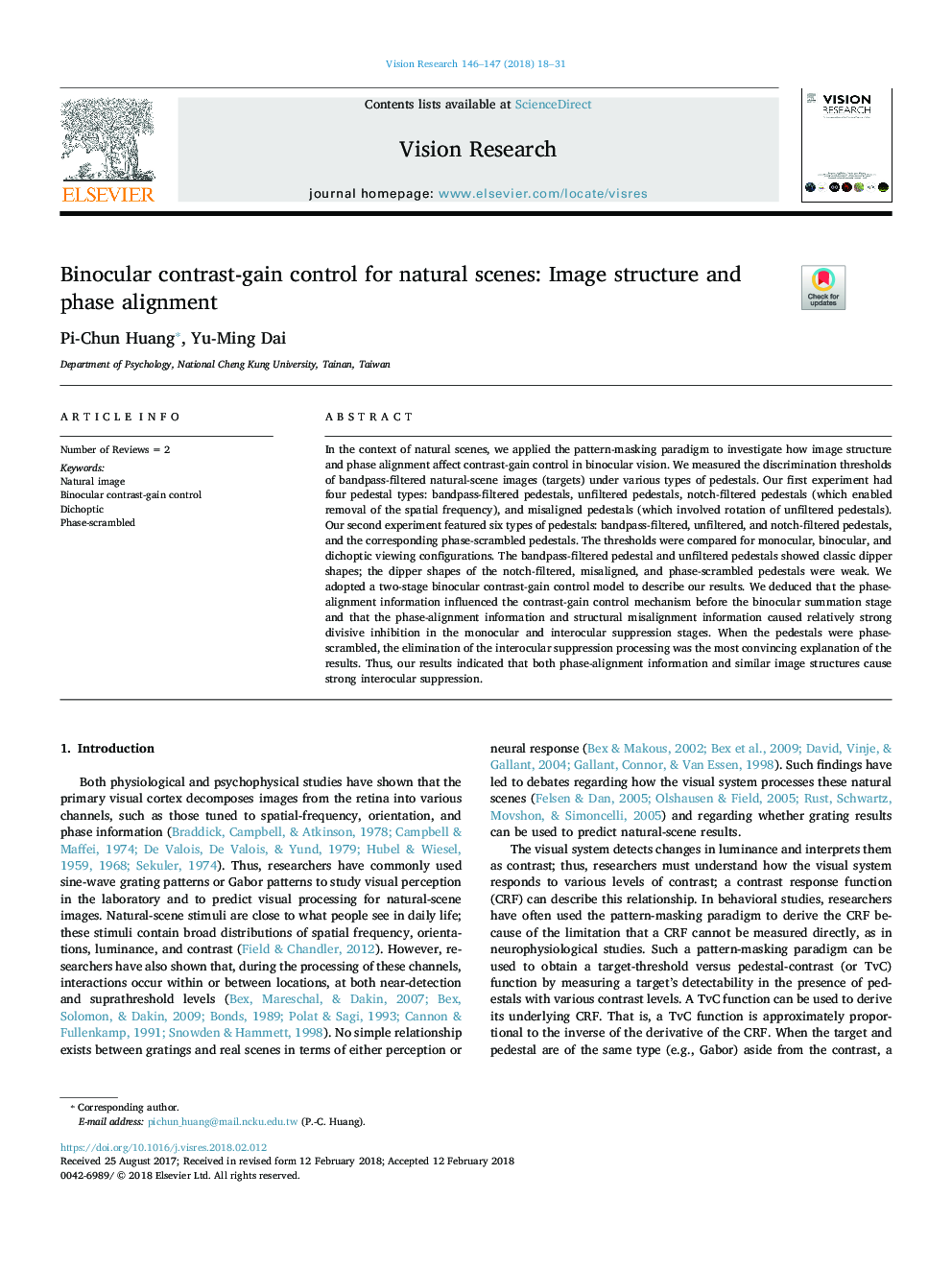| Article ID | Journal | Published Year | Pages | File Type |
|---|---|---|---|---|
| 8795302 | Vision Research | 2018 | 14 Pages |
Abstract
In the context of natural scenes, we applied the pattern-masking paradigm to investigate how image structure and phase alignment affect contrast-gain control in binocular vision. We measured the discrimination thresholds of bandpass-filtered natural-scene images (targets) under various types of pedestals. Our first experiment had four pedestal types: bandpass-filtered pedestals, unfiltered pedestals, notch-filtered pedestals (which enabled removal of the spatial frequency), and misaligned pedestals (which involved rotation of unfiltered pedestals). Our second experiment featured six types of pedestals: bandpass-filtered, unfiltered, and notch-filtered pedestals, and the corresponding phase-scrambled pedestals. The thresholds were compared for monocular, binocular, and dichoptic viewing configurations. The bandpass-filtered pedestal and unfiltered pedestals showed classic dipper shapes; the dipper shapes of the notch-filtered, misaligned, and phase-scrambled pedestals were weak. We adopted a two-stage binocular contrast-gain control model to describe our results. We deduced that the phase-alignment information influenced the contrast-gain control mechanism before the binocular summation stage and that the phase-alignment information and structural misalignment information caused relatively strong divisive inhibition in the monocular and interocular suppression stages. When the pedestals were phase-scrambled, the elimination of the interocular suppression processing was the most convincing explanation of the results. Thus, our results indicated that both phase-alignment information and similar image structures cause strong interocular suppression.
Keywords
Related Topics
Life Sciences
Neuroscience
Sensory Systems
Authors
Pi-Chun Huang, Yu-Ming Dai,
